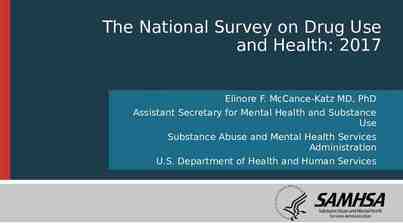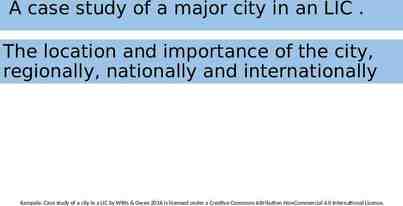Chapter 10 International Trade These slides supplement the textbook,
82 Slides672.50 KB

Chapter 10 International Trade These slides supplement the textbook, but should not replace reading the textbook 1

Why trade with other nations? All nations can increase productivity, lower prices, increase jobs and standard of living 2

Why is trade advantageous for all countries? Because the world’s resources are not evenly distributed around the globe 3

How does foreign trade effect GDP? An increase in exports increases GDP A decrease in exports decreases GDP 4

Shifts in the Economy’s PPF Food An increase in available resources A' A Without international trade With international trade F F' Clothing 5

What gives a county’s currency value? It has something that other countries want 6

What is a country’s exchange rate? The price of one country’s currency measured in terms of another country’s currency 7

What does it mean when a currency is depreciated? An increase in the number of units of a currency needed to purchase one unit of foreign exchange 8

What does it mean when a currency is appreciated? A decrease in the number of units of a currency needed to purchase one unit of foreign exchange 9

What determines the exchange rates of different currencies? The supply and demand for that currency on the international market 10

What are flexible exchange rates? Rates are determined by the forces of demand and supply without government intervention 11

What is it called when currencies are allowed to fluctuate? This is called floating 12

What determines the demand for a currency on the international market? Foreigners demand a another country’s currency for what that currency can buy in that country 13

What determines the supply for a currency on the international market? When citizens of a country buy goods and services from another country 14

What determines different exchange rates? Relative price levels rates of interest rates of growth political & economic stability 15

Value of the dollar Equilibrium in the World Market Surplus Shortage S D Quantity on world market 16

Value of the dollar Effects of an Increase in Demand S 0 D' D Quantity on world market 17

Value of the dollar Effects of an Decrease in Demand S 0 D' D Quantity on world market 18

Value of the dollar Effects of a Decrease in Supply S’ 0 Quantity on world market S D 19

Value of the dollar Effects of a Increase in Supply S 0 Quantity on world market S’ D 20

What is a dirty float? A dirty float occurs when a country influences the demand and/or supply of its currency on the international market 21

What is a managed float system? An exchange rate system that combines features of freely flexible rates with intervention by central banks 22

What kind of system do we have today? A managed float system 23

What is the balance of trade? The measure of money that enters and leaves a country via trade with other nations 24

What is a favorable balance of trade? The value of a country’s imports of goods is less than the value of its exports of goods 25

What is an unfavorable balance of trade? The value of a country’s imports of goods is greater than the value of its exports of goods 26

How can money leave or enter a country other than trade? investments travel sending gifts 27

Can the balance of payments offset the balance of trade? Money can leave a country because of trade - but more money can enter the country in other areas 28

What is a country’s balance-of-payments? Summarizes all economic transactions that occur during a given time period between residents of that country and residents of other countries 29

What is a payments surplus? When there is more money entering a country than there is leaving a country 30

When can a payments surplus be a problem? If it is too favorable over time it can cause inflation 31

What is a payments deficit? When there is more money leaving a country than there is entering a country 32

When can a payments deficit be a problem? If it is too unfavorable it can cause unemployment 33

At what point is equilibrium reached? When the amount of money entering equals the amount of money leaving 34

How are Balance of Payments Problems Resolved? With a lot more money entering over a time, a currency will appreciate in value With a lot more money leaving over time, a currency will depreciate in value 35

Why is there a balance in the balance of payments? The value of a country’s currency fluctuates as the supply fluctuates on the world market 36

What is the gold standard? An arrangement whereby the currencies of most countries are convertible into gold at a fixed rate 37

When was the gold standard? From 1879 to 1914, the international financial system operated under a gold standard 38

What is one advantage of the gold standard? Any increase in the money supply would be limited to a country’s gold holdings 39

Did America honor gold payments after WWI? Yes! If countries demanded payment for goods and services in gold we would pay in gold 40

What happened to this practice of paying in gold? During the Depression of the 1930’s foreigners demanded payment in gold, thus depleting our gold supply 41

When did the gold standard end? During World War I, the gold standard collapsed, limiting trade during the 1920s and 1930s 42

What is the fixed exchange rate system? The value of each currency was pegged to an ounce of gold 43

When was the fixed exchange rate system? From about 1945 to 1972 44

What was the Bretton Woods Agreement? All foreign exchange rates were fixed in terms of the dollar and the dollar could be converted to gold at a fixed exchange rate 45

Under the Bretton Woods Agreement how much did we agree to exchange foreign holdings of dollars? 35 an ounce 46

When was the Bretton Woods Agreement? 1944 47

What is currency devaluation? An increase in the official pegged price of foreign exchange in terms of the domestic currency 48

What is currency revaluation? An reduction in the official pegged price of foreign exchange in terms of the domestic currency 49

What is the International Monetary Fund? Helps facilitate exchange rates by allowing countries to trade currencies 50

When was the IMF established? 1944 51

How does the IMF help countries? 52

If the U.S. wants to devalue the dollar it will borrow dollars from the IMF and buy other currencies around the world If the U. S. wants to revalue the dollar it will borrow other currencies from the IMF and buy dollars around the world 53

What was the advantage of the fixed rate system? Each country knew what its currency was worth in relation to foreign currencies 54

What happened to the fixed exchange rate system? The inflation in the 1970’s led to a change in the value of all currencies 55

In what year did the Bretton Woods System collapse? In 1972 we uncoupled the dollar from the pegged international monetary system 56

Does specialization increase productivity? By each country Yes!specializing in certain exports non-productive activity is lessened 57

What should a country specialize? In those goods and services that it has a comparative advantage 58

What is comparative advantage? Producing something with lower opportunity costs than others 59

What is absolute advantage? Producing something better than others 60

What should a country produce? It should produce those things in which it has a comparative advantage 61

What is an example of comparative advantage? Even if Americans were best at making wicker baskets our opportunity costs would be very high in this activity 62

What is the good enough rule? If a country has a comparative advantage in a product that product should be produced if the job can be done good enough 63

What are the reasons for international specialization? differences in resources economies of scale differences in tastes 64

When will we trade? When the world price is . our price, export our price, import our price, will not trade 65

When would a high wage worker be cheaper than a low wage worker? When the high wage worker is a lot more productive than the low wage worker 66

What makes one worker more productive than another? Better Infrastructure Capital Education Skills Attitude 67

Why have trade restrictions? There are good and bad reasons for trade restrictions 68

How do we restrict trade? tariffs import quotas export subsidies licensing agreement unreasonable standards 69

What are two types of tariffs? Specific - applied to a specific good, like a barrel of oil Ad Valorem- a percentage of the price of imports at the port of entry 70

What are the effects of a tariff or quota? An increase in prices A decrease quantity in supplied A lower standard of living 71

What is dumping? The practice of selling a commodity abroad at a price that is below its cost or below the price charged in the home market 72

What are the three types of dumping? 73

Predatory is when the purpose of dumping is to drive competitors out of the market, this is rare Long-term is when there are economic reasons that a product can be sold at a low price, for example, less competition Sporadic occurs when there are excess inventories 74

What are arguments for tariffs and quotas? 75

National defense Protect infant industries Protect against predatory dumping Reduce unemployment Protect temporary declining industries Promote variety 76

What are arguments against trade restrictions? 77

Leads to retaliation Subsidizes weakness Works against comparative advantage Problems with policing & enforcing Encourages rent seeking 78

What is the World Trade Organization (WTO)? Treat all nations equally Reduce tariff rates Reduce import quotas 79

What is the Common Market? A market in Europe begun in 1958 as a way of creating barrier-free trade in Europe 80

What is North American Free Trade Agreement (NAFTA)? Passed during the Clinton Administration to remove barriers of trade with Mexico 81

END 82






